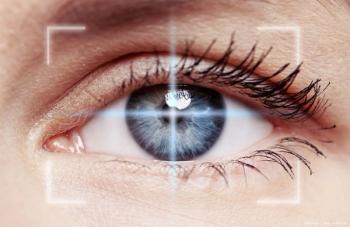
The ciliary muscle - the driving force of accommodation
Accommodation is the result of changes in the optical power of the crystalline lens that results from change in the lens anterior and posterior surface curvatures and thickness. The ciliary muscle is the engine that drives the accommodative process, and the lens capsule and the lens are important components of accommodation, according to Adrian Glasser, MD, from the College of Optometry, University of Houston, Houston.
Accommodation is the result of changes in the optical power of the crystalline lens that results from change in the lens anterior and posterior surface curvatures and thickness. The ciliary muscle is the engine that drives the accommodative process, and the lens capsule and the lens are important components of accommodation, according to Adrian Glasser, MD, from the College of Optometry, University of Houston, Houston.
"Accommodation is an active and dynamic process," Dr. Glasser said. "With increasing age, accommodation is gradually and ultimately completely lost with the progression of presbyopia."
Dr. Glasser described the conclusions that he and his colleagues reached based on in vitro studies of enucleated eyes and from in vivo studies in primates.
During accommodation, research has shown that the ciliary muscle contracts with accommodation, the apex of the ciliary body moves toward the lens equator, releasing zonular tension to allow the elastic capsule to mold the lens into an accommodative form. The lens thickness increases; lens diameter decreases; and the lens surface curvatures become steeper, according to Dr. Glasser.
"The physical changes in the lens are highly correlated with the accommodative refractive changes," Dr. Glasser said. "The in vivo and the in vitro accommodative responses are essentially identical. The accommodative changes in the eyes of Rhesus monkeys are very similar to those of humans. With increasing age, the lens continues to grow throughout life with an increase in lens thickness but without an increase in lens diameter. The stiffness of the human lens increases exponentially and in Rhesus monkeys lens movement decreases with increasing age.
"The ciliary muscle in humans and Rhesus monkeys retains the ability to contract with an accommodative effort," Dr. Glasser continued. "Presbyopia is ultimately characterized by total loss of accommodative ability of the lens. The age changes in the eyes of Rhesus monkeys are quantitatively and qualitatively similar to those in humans."
Newsletter
Don’t miss out—get Ophthalmology Times updates on the latest clinical advancements and expert interviews, straight to your inbox.
















































.png)


